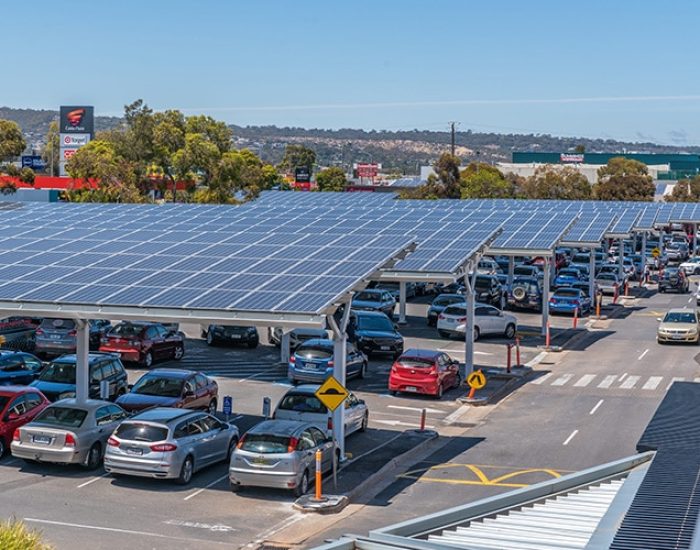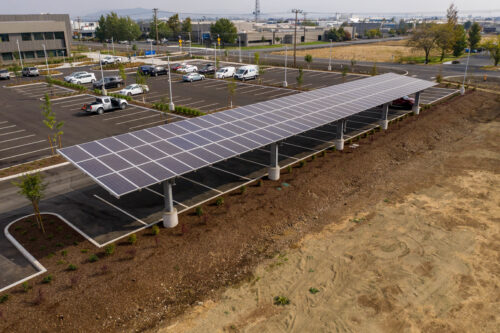Solar Shade Structures: Secret Variables to Consider Prior to Creating & Building
Solar shade structures have acquired popularity as a multifunctional remedy that integrates the advantages of providing shade and also defense with the generation of tidy as well as renewable energy. In this article, we will delve into the world of solar shade structure design as well as building, checking out the varied alternatives offered. From materials and forms to setup methods, we will take a look at just how innovative style selections can make the most of energy manufacturing while creating aesthetically pleasing and functional structures that add to a lasting future.
Solar shade structures have actually become an increasingly popular selection for a wide variety of applications, including car park, leisure locations, and outdoor gathering rooms. These structures not just use shade and also defense from the sunlight's harsh rays but also harness solar energy to produce electrical power. Allow's discover the crucial facets of solar shade structures.
I. Materials for Solar Shade Structures
The materials utilized in the building and construction of solar shade structures play a substantial function in their resilience, appearances, as well as power performance. Here are some common materials used:
Steel:
Steel uses outstanding strength and longevity, making it a suitable option for larger structures. It can endure extreme climate condition as well as provide resilient assistance for photovoltaic panels. Furthermore, steel can be reused, making it an eco-friendly option.

Aluminum:
Comparable to steel, aluminum is lightweight, corrosion-resistant, as well as commonly made use of in solar shade structures. It is particularly suitable for locations near coastal regions, as it is resistant to deep sea corrosion. Light weight aluminum structures additionally have a high recycling price, adding to sustainability.
Wood:
Timber provides an extra all-natural and aesthetically pleasing option for solar shade structures. It blends well with exterior settings as well as can be treated to enhance its longevity and resistance to weathering. Making use of sustainably sourced and licensed timber is suggested to decrease environmental impact.

Material Membranes:
Material membranes provide adaptability and also translucency, allowing diffused sunlight to filter through while providing shade. They are commonly made use of in sail-like structures, including an unique and artistic touch to outside spaces. Selecting premium, UV-resistant fabrics makes certain longevity and optimal efficiency.
II. Forms and also Architectural Considerations
Solar shade structures been available in numerous shapes and sizes, providing personalization alternatives to match different areas and also purposes. Here are some preferred layouts:
Cantilever Structures:
Cantilever structures feature an overhanging layout that gives unblocked space beneath. These structures are specifically suitable for car parks, as they provide enough shade without impeding parking or motion. Cantilever structures can be developed with single or several arms, relying on the size as well as layout requirements.
Multiple-Column Structures:
Multiple-column structures provide a modular technique, using versatility and scalability. This style enables easy expansion and modification to accommodate different locations and future needs. The spacing between columns can be optimized to optimize shade insurance coverage and solar panel setup.
Sail-like Structures:
Sail-like structures are typically made use of in outdoor leisure areas, giving an artistic and also visually appealing layout. These structures produce distinct forms and also shadows while effectively taking advantage of solar power. The tensioned material membrane layers made use of in sail-like structures can be tensioned with wires or steel frames to accomplish the desired shape.
Building factors to consider, such as the alignment of the structure, also play a crucial duty in optimizing solar energy generation. Lining up the structure to face the sunlight's path optimizes power production, while the inclusion of solar tracking systems even more enhances performance by following the sun's activity throughout the day.
III. Installation Techniques as well as Structure Systems
The installment approaches for solar shade structures rely on site conditions as well as style needs. Right here are some usual installment techniques:

Ground-Mounted Solutions:
Ground-mounted systems are commonly used in open spaces as well as need structures such as concrete grounds or ground screws. These structures are flexible as well as can be conveniently gotten used to optimize sunshine exposure. Ground-mounted systems are typically used for solar parking area structures and also larger-scale shade setups.
Rooftop Installations:
Roof setups make effective use of existing structures, such as structures or carports. These installments are space-saving as well as can use the available roof area for solar power generation. Roof installations need appropriate architectural analysis to make certain the roofing can handle the extra weight of the solar shade structure.
Integrated Systems:
Integrated systems combine the solar panels with the structure itself, flawlessly blending renewable resource generation with useful shade stipulation. These systems supply a natural and visually enticing style. Integrated systems are frequently made use of in building jobs where the solar shade structure becomes an indispensable part of the total building or landscape design.
Structure systems play an essential duty in the stability and longevity of solar shade structures. Options such as ballasted systems, heap foundations, and concrete footings supply stability in various dirt conditions. Design knowledge is essential in identifying the proper foundation system based on variables such as wind tons, soil problems, and regional building codes. Proper foundation layout makes certain the structure can endure environmental pressures as well as preserve structural honesty over time.
IV. Aesthetics as well as Integration
Aesthetics and assimilation are necessary factors to consider in solar shade structure design, as they make certain the structures mix harmoniously with the surrounding atmosphere. Here are some bottom lines to take into consideration:
Layout Elements:
Integrating layout aspects such as curved or geometric shapes, color modification, as well as imaginative patterns enables innovative expression while maintaining capability. This allows solar shade structures to end up being aesthetically appealing focal points within their corresponding atmospheres. The selection of shades can also aid with warmth reflection, minimizing warmth absorption within the structure.
Combination with Various Other Technologies:
Integrating solar shade structures with various other modern technologies as well as systems can better enhance their capacities. For instance, incorporating energy storage systems makes it possible for the storage of excess energy for usage during non-sunny periods, maximizing energy application. Additionally, clever monitoring and control systems provide real-time information on power manufacturing and intake, enhancing performance and also upkeep. Integration with LED illumination systems can enhance the functionality of solar shade structures, expanding their functionality right into the evening hrs.
Ecological Considerations:
Sustainability needs to be an essential emphasis when designing and also constructing solar shade car park solar structures structures. Selecting materials with reduced ecological effect, making use of recycled or recyclable products, as well as applying energy-efficient innovations all contribute to developing environmentally friendly structures. Life process assessments can be conducted to examine the overall environmental influence of the structure.
Regularly Asked Questions
Q1. What are the advantages of solar shade structures?
Solar shade structures give shade and also defense from the sunlight's rays while producing clean as well as renewable resource. They provide a sustainable remedy that contributes to minimized energy prices and also ecological conservation. Solar shade structures can additionally boost outdoor convenience and develop even more usable rooms.
Q2. Can solar shade structures be tailored to fit different locations?
Yes, solar shade structures been available in various sizes and shapes, permitting modification based upon the location's requirements and visual choices. Layout alternatives, materials, and also setup approaches can be customized to fit specific applications as well as environments.
Q3. Are solar shade structures sturdy?
Yes, the sturdiness of solar shade structures relies on the materials made use of and correct building methods. Steel as well as aluminum structures are understood for their strength as well as long life. Wood structures can likewise be durable when treated as well as preserved effectively. Fabric membranes should be chosen based on their resistance to UV radiation and weathering.
Q4. Just how can solar shade structures add to energy effectiveness?
Solar shade structures produce electrical energy with photovoltaic panels, lowering reliance on traditional energy sources. Excess power can be saved for later use, enhancing energy use. Integrating energy-efficient lights systems and control systems additionally boosts energy performance.
Conclusion
Designing as well as constructing solar shade structures requires mindful factor to consider of different elements, including products, forms, setup approaches, aesthetics, and assimilation with various other technologies. By leveraging cutting-edge style options and building strategies, solar shade structures can give shade and protection while producing clean and also renewable resource. As the demand for lasting energy services remains to grow, solar shade structures supply an useful and also visually appealing strategy to fulfilling both environmental and functional demands. With correct layout and also building and construction, solar shade structures can contribute to a much more lasting and energy-efficient future.